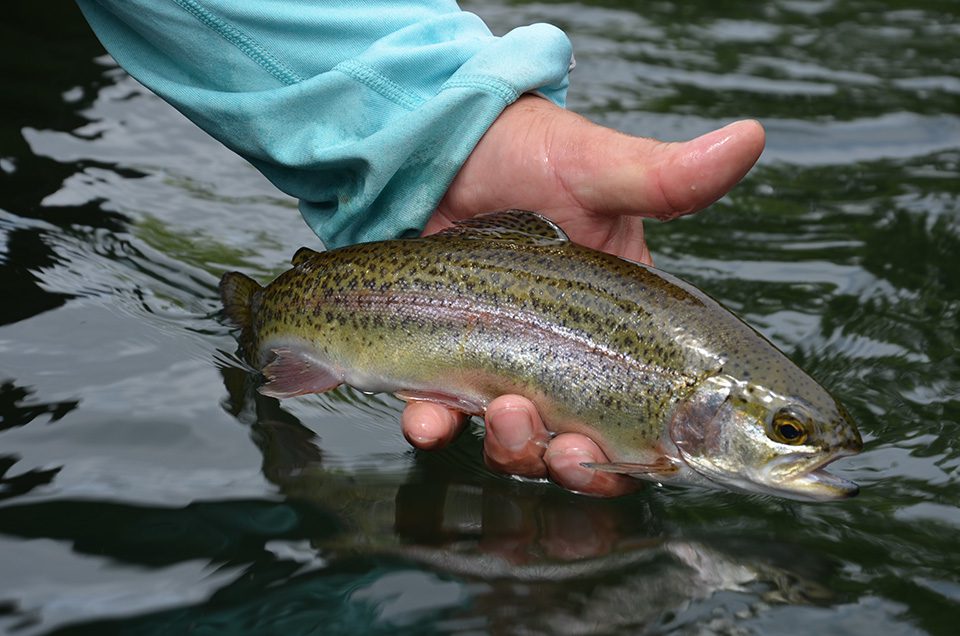By Nick Carter
Even in the depths of winter, there is trout action to be found on the many delayed harvest (DH) streams across the country where state agencies stock trout heavily under catch-and-release regulations.
DH stretches offer high densities of trout that grow progressively wilder through winter into spring. Read on to find out how Bill Stranahan, a veteran guide with Southeastern Anglers, approaches DH trout.
Bugger Time
“Wooly Buggers are so important this time of year,” Stranahan said. “You’re looking for that reaction strike. Swing and strip. Keep it moving.”
Olive and black are perennial favorite colors whenever and wherever, and for winter fishing he prefers smaller Buggers in sizes 6 to 10. The primary DH stretches he fishes are Tennessee’s Hiwassee tailrace and the Tellico River, which is a freestone. They are very different fisheries, yet swinging and stripping Buggers is pretty much universal.
Get Down On It
If catching numbers of fish is the goal, nymphing is normally the best tactic. When the trout are less active—especially when they’re holed up in deeper, slower runs during a cold snap—it might be the only way to catch fish.
The key to these conditions is depth. Trout won’t move far to feed when they’re hunkered down, so getting your nymphs down to them is imperative.
Stranahan likes a weighted Pat’s Rubber Legs, or a similar heavy stonefly nymph in sizes 6 to 10. It’s a big buggy-looking mouthful, and it’s also a great anchor fly to fish in tandem with other nymphs. Depending on what the fish want, the Pat’s could be fished below “junk food” like a Squirmy Worm, a mop or egg pattern, or flashy attractor nymphs like a Rainbow Warrior or Lightning Bug. Or, if trout want something more natural, the Pat’s could anchor a small black stonefly nymph, a Hare’s Ear or a Prince.
Again, depth is the key, so Stranahan likes a good sliding indicator that’s easy to adjust. Judge the depth of each hole, and try to get your anchor fly to drift just off the bottom.
Headhunting
“Depending on how froggy you feel on a given day as an angler, you can go out running and gunning with big streamers,” Stranahan said.
On a large tailwater or in deep holes on a smaller stream, big streamers have a way of turning the biggest fish. A big Zonker, a Swimmin’ Jimmy, a Zoo Cougar or one of Kelly Galloup’s other articulated patterns make a commotion when fished on sinking line.
You’re trying to get their attention. If you don’t get chased in one hole, switch something up and move until you find what’s working. Sticking to the plan is important, though. You’re hunting a few fish large and aggressive enough to eat a raucous fly.
Check out Southeastern Anglers at www.southeasternanglers.com.
